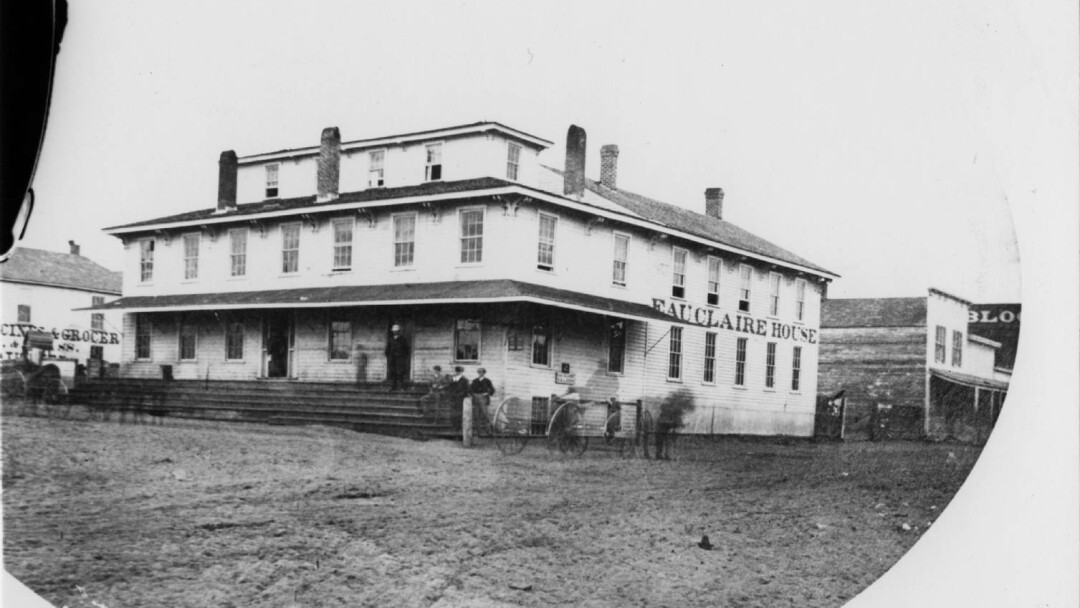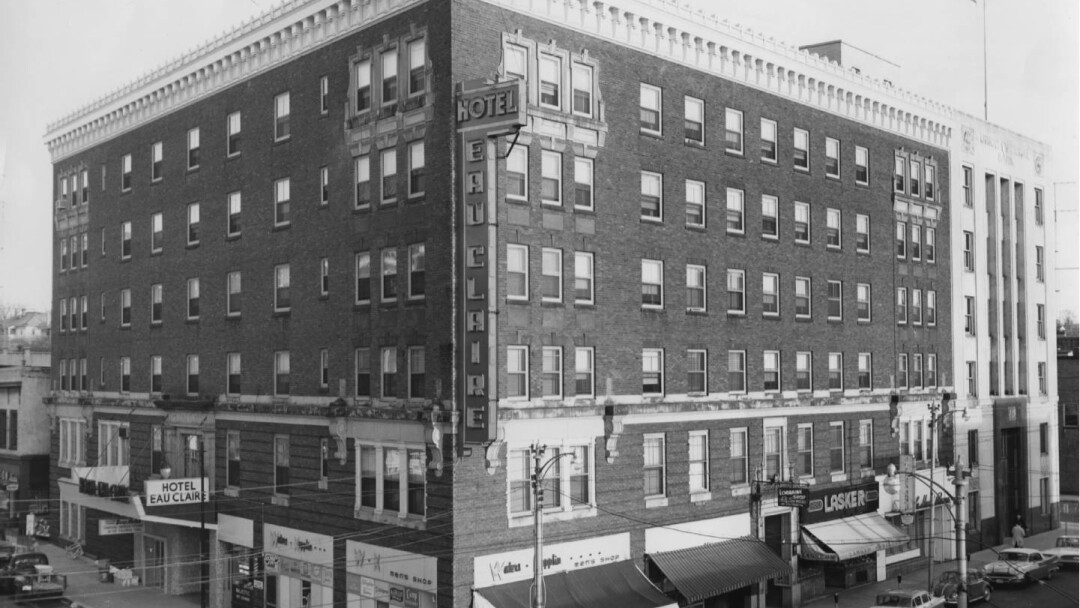5 Historic Chippewa Valley hotels

1. The Eau Claire House
Considering the recent attention to a pair of downtown Eau Claire hotels undergoing renovation, we thought we’d look at some of the hotels you’ll only find in the history books. Eau Claire’s first hotel, the Eau Claire House, was built by Adin Randall in 1856 on South Barstow Street. By the 1870s, the wood-frame hotel had changed hands several times, almost burned five times, and had received a brick addition. In 1879, the wooden frame portion was moved and replaced by more bricks, and the whole thing burned down in 1918.
2. The Niagara House
Just a few months after the Eau Claire House opened, the Niagara House was built in what was known as West Eau Claire (now the Water Street and courthouse area.) The hotel got its name from Little Niagara, which was just across the Chippewa River. “In the early days,” wrote local historian Lois Barland, “the menu consisted of pork and beans and whisky for breakfast, lunch, and dinner. Later the menu improved.”
3. Monongahala House
Another early West Eau Claire Hotel was the Monongahala House, 329 Water St. According to Barland’s book Sawdust City, in 1857 “it was the scene of a meeting for the purpose of taking the necessary steps to restrain hogs from running at large.” It was supposedly named for the Monongahala whiskey kept in the basement.

4. Hotel Eau Claire
During much of the 20th century, the place to stay, dine, and celebrate downtown was the Hotel Eau Clare, 307 Eau Claire St. (roughly where US Bank stands). The six-story, 175-room hotel cost $700,000 and opened in 1921. Over the years, its dining room was expanded to accommodate 185 people, and countless public events were held there. Among its famous guests were future presidents John F. Kennedy and Richard Nixon. The hotel was demolished in 1970.
5. The Galloway House
The Galloway House wasn’t on Galloway Street (although it had the same namesake). Dr. William T. Galloway built the three-story brick structure in 1873 at the southwest corner of Farwell and Gibson streets. By 1881, it had a Turkish bath and a bus that met the trains, and in November 1884 boasted it was the only hotel in the U.S. with electric lights. It was torn down to make way for the city parking ramp in 1953.


















